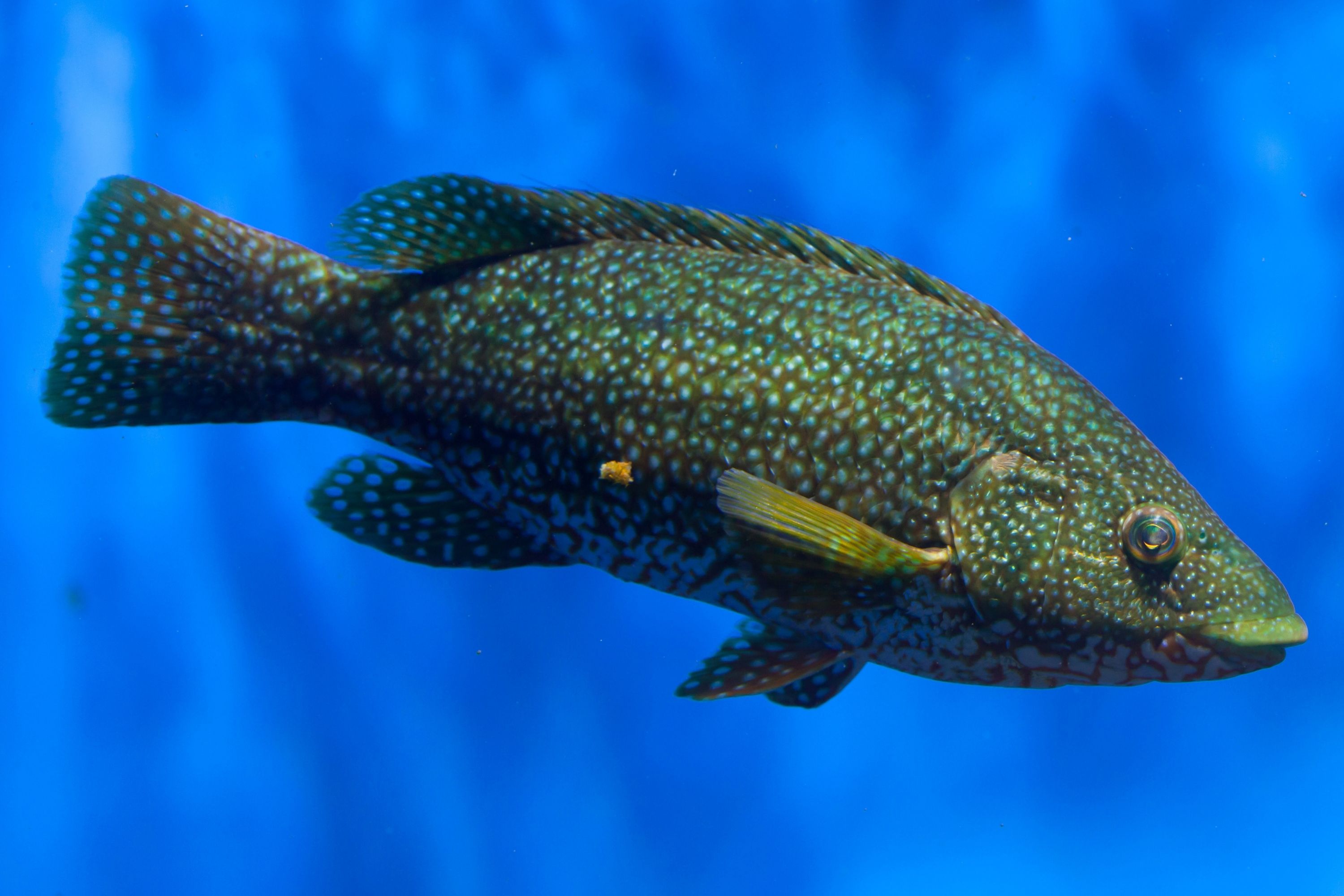Ballan wrasse
(Labrus bergylta)

Description
The ballan wrasse (Labrus bergylta) is a species of marine ray finned fish from the family Labridae, the wrasses. It is found in the eastern Atlantic Ocean, where it inhabits rocky areas. Like many wrasse species, it is a protogynous hermaphrodite all fish start life as females, and some dominant fish later become males. It is used as a food fish in some areas and it is also finding use as a cleaner fish in the aquaculture of Atlantic salmon (Salmo salar) in northwestern Europe. The ballan wrasse is a large, heavy bodied wrasse with a relatively deep body and large head. It has a smallish mouth which is surrounded by thick, fleshy, rather wrinkled lips, and the jaws are armed with a single row of robust teeth which are sharp and pointed in young fish but blunter and more worn in older fish. It has a long dorsal fin which has 18-21 spines in its anterior portion and 9-13 branched rays in the rear part. The anal fin is markedly shorter and has three spines. It has large scales with 41-47 of them in the lateral line. The juvenile fish are coloured to match their habitat and vary in from light green to dark green, with some being described as bright emerald green. The adults are more variable in colour, as they can either be dark green or reddish brown but are marked all over with numerous white spots. It can grow to 65.9 cm (25.9 in) in total length (though most do not exceed 50 cm (20 in) standard length), and the greatest recorded weight of this species is 4.4 kg (9.7 lb). Ballan wrasses are prototgynous hermaphrodites. Ballan wrasse are native to the northeastern Atlantic Ocean from Norway to Morocco, including the islands of Madeira, the Azores and the Canary Islands. There are records from the Mediterranean Sea but these are regarded as questionable and may be misidentifications of the brown wrasse (Labrus merula). They can be found at depths from 1 to 50 m (3.3 to 164.0 ft) amongst rocks, seaweed and reefs. All ballan wrasses are female for their first four to 14 years before a few change into males. Large fish of the species are almost certainly male. The thick lips and sharp front teeth of the ballan wrasse are an adaptation for extracting shellfish from rocks. These are supplemented by powerful pharyngeal teeth which are placed further back in the throat and which can break up shells to access flesh inside. This species also feeds on crustaceans and their diet includes hard-shelled crabs and small lobsters.
Taxonomic tree:







